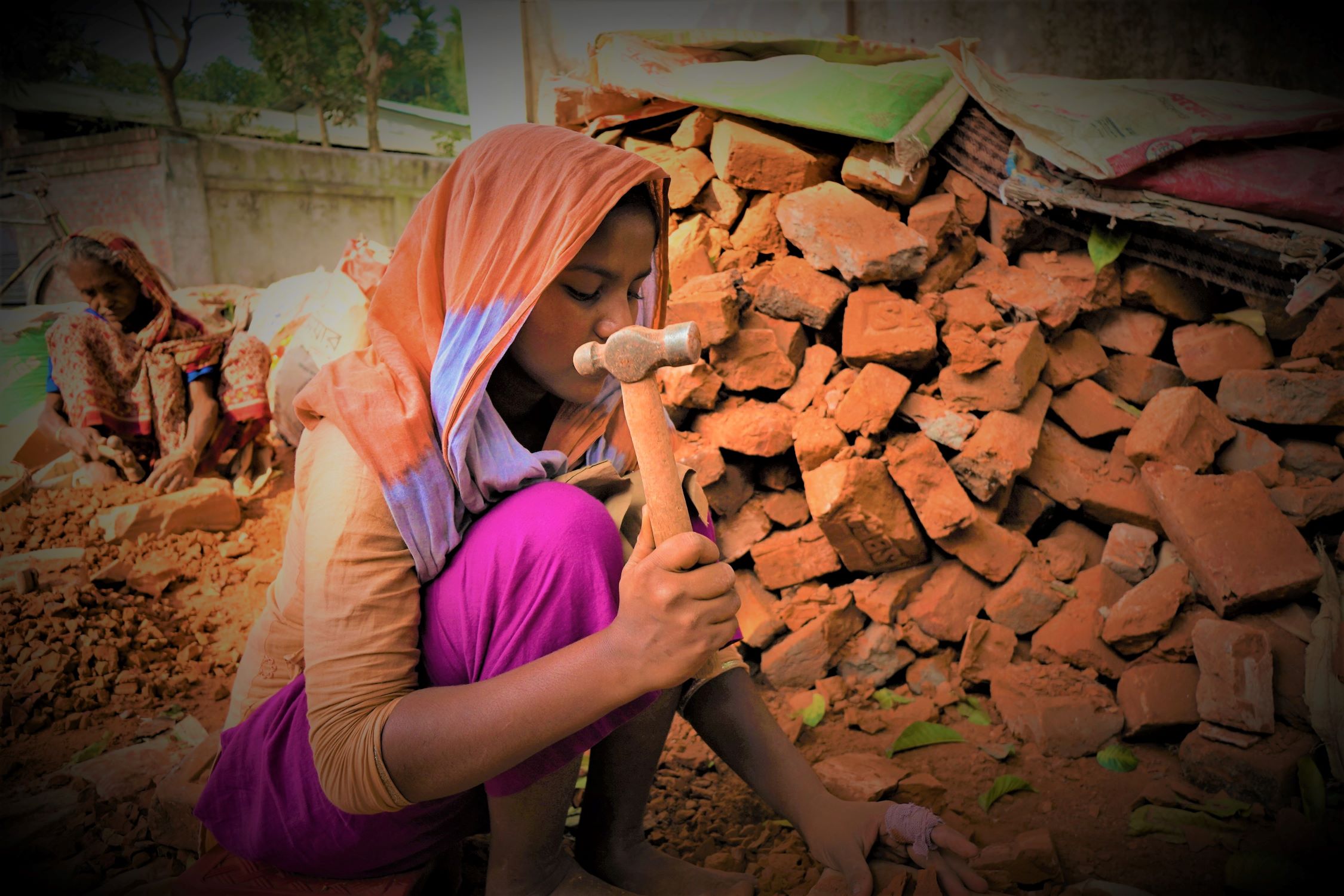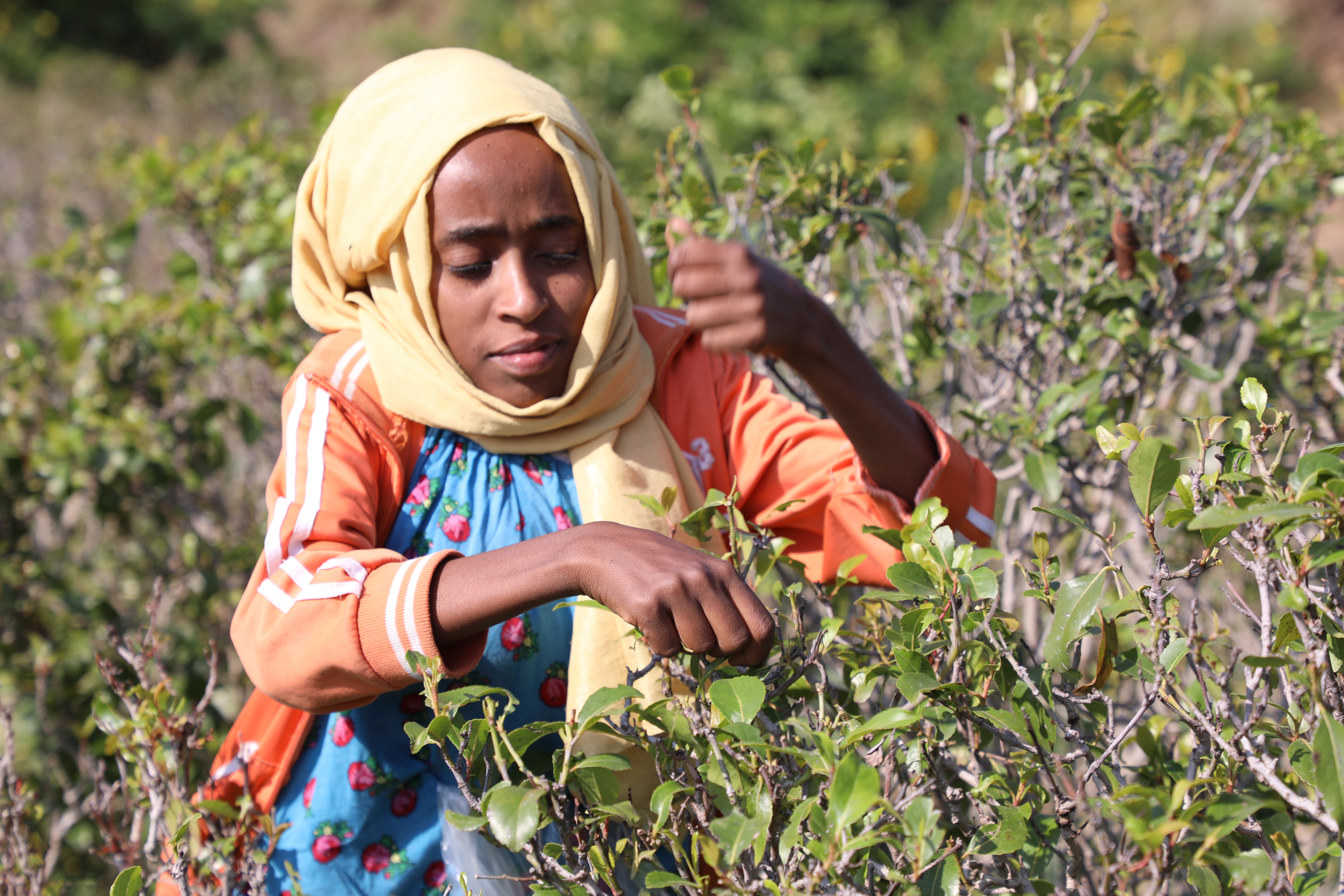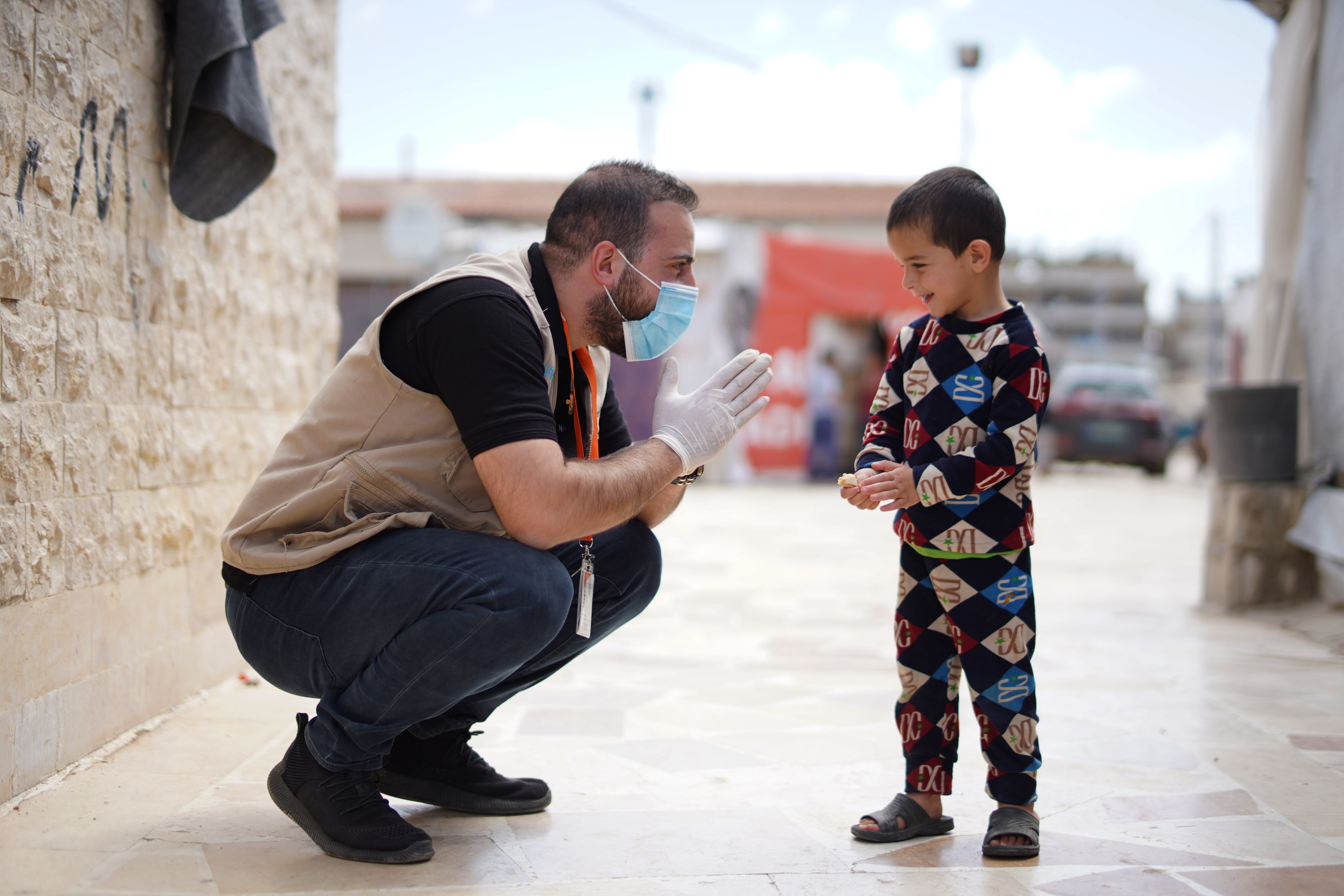
World Day against child labour 2022
Shocking statistics, a child’s story… and how we’re helping tackle child labour
Caption for above photo: Nuri, 11, is from Bangladesh. She says, “It is very hard to break bricks; I often miss the brick and land the hammer on my fingers. It hurts so much.”
Almost 1 in 10 children are involved in child labour, according to data from the International Labour Organisation and UNICEF (data taken from the start of 2020). As we approach World Day against child labour on 12 June 2022, the statistics are eye watering:
- 63 million girls
- 97 million boys
- – that's 160 million children who are involved in child labour.
Between 2016-2020 the level of child labour increased because of population growth, extreme poverty, economic shocks and school closures due to Covid.
But it’s not about the numbers – behind each statistic is a real child with their own story. Children like Wakeel* (not his real name).

One shoeshine boy’s hope for education
Amid roadside restaurants and bustling crowds in one of Herat’s busiest markets, in Afghanistan, 10-year-old Wakeel* is working as a shoeshine boy. Until recently, he had never stepped foot inside a school, instead roaming the streets, equipped with brush and shoe polish, working 11-hour days to provide an income for his family.
Each morning he gets up early with his two brothers, gulps down a cup of green tea, maybe munches on some bread, and then ventures out into the city. If the three brothers don’t work, the family will go hungry, they say.
The 10-year-old, who now lives in Herat city in northwestern Afghanistan, moved from the rural Badghis province two years ago, his parents’ decision to relocate driven by hunger and poverty. In Herat, his family had hoped to find work easily but instead Wakeel and his two brothers quickly became the family’s only breadwinners.
“I started when I was eight years old,” says Wakeel. “My father is sick and can’t work anymore, so my brothers and I work to buy bread.” On a good day, Wakeel makes up to 100 Afghani, just over US$1, with his brothers bringing in similar amounts. The need to buy food has driven him onto the streets but hunger is still a daily reality. During the day, he mostly works on an empty stomach.
This worries his mother Shafiqa*, 30. “I suffer because of my children’s unknown future,” she admits. “I am worried about what kind of future is awaiting them because they couldn’t go to school. I worry each day when my boys leave in the mornings,” she said, adding that she was mostly concerned with accidents and kidnapping [for ransom] – a recently increasing crime as poverty has soared.
Shafiqa is working too. She takes on cooking and cleaning jobs and would like more but the demand isn’t there. “I’m sorry that my children have to work,” she says.
60,000 children work on the streets in Kabul
Child labour is common throughout Afghanistan, with estimates showing that in the capital Kabul alone, at least 60,000 children work on the streets every day. In Herat, up to 10,000 could be working regularly, the previous government’s municipality estimated. Since last year’s regime change, these numbers have tripled.
Afghanistan’s economy has deteriorated to the point of total collapse; with almost the entire population – 95 percent – unable to access adequate food supplies. Almost nine million people are just one step away from famine. With last August’s regime change, the country’s banking system has collapsed; the currency inflated. Billions of private Afghan assets remain frozen in US banks, meaning that countless people can’t access their savings. Wakeel has no savings and on a bad day he makes no money at all, because even the 20 Afghani (US$0.23) to have your shoes cleaned is difficult to afford for many.
Centre for street-working children
But recently, things have changed for Wakeel.
World Vision has worked in Herat for more than 20 years, and we have been setting up programmes for street-working children like Wakeel as well.
World Vision has set up Herat’s first centre for street-working children, providing children between the ages of six and 12 the opportunity to receive health care, food rations, protection, education and life skills. The centre aims to target the root causes of child neglect and disempowerment while, at the same time, raising awareness of children’s rights and helping children like Wakeel attend school regularly.
Wakeel has been coming to World Vision’s centre once a week, receiving informal education, eating a meal and taking time to just play. The centre is colourfully decorated: children’s drawings are on the walls, toys are neatly stacked on a shelf. Upstairs, those children who don’t usually attend school have the chance to learn how to read and write.
Afghanistan’s needs have reached a new peak, and we are committed to responding to the country’s humanitarian catastrophe – both immediately and long-term. In the past six months, World Vision has reached more than one million people, including children, providing them with life-saving food distributions as well as livelihood support. We want to ensure that children like Wakeel don’t carry the responsibility of having to provide for their families. We want them to be able to focus on learning and growing.
Wakeel had long worried about not receiving an education. Seeing other children in their uniforms, carrying their books and backpacks to school made him cry. He’d wanted to join them so badly, but he knew his family could be starving if he didn’t work. Now, attending World Vision’s centre has given him hope.

What is World Vision doing about child labour?
World Vision works to ensure that vulnerable children and families have access to education, economic development, and social protection services – both to prevent children from entering harmful work and to reduce the numbers engaged in child labour.
Our approach affirms the role of caregivers as the first line of support responsible for the care and protection of children. It also emphasises the duty on the State to guarantee that care and protection are provided.
World Vision works to address child labour
Working to empower children and build their confidence
- This involves providing children with life skills training, important in both preventing child labour and helping children move away from hazardous work and back into education, or decent work for children of legal working age.
- Increasing children’s awareness of their rights regarding child labour – and promoting their agency, as well as raising awareness of children’s rights more broadly in the community.

World Vision has found that strong communities, able to provide lasting protection to those in child labour or at risk of it, are born out of a long-term engagement which includes:
• community awareness-raising and cooperation
• improving the livelihoods of poorer families
• strong children’s forums
• building positive community relationships and encouraging cooperation (leading to social cohesion)
• working with faith leaders to change social norms.
Helping children and their families access alternatives to child labour
Our World Vision UK-led coalition Partnership Against Child Exploitation is working with families and their communities, local authorities and employers to identify suitable alternatives to the worst forms of child labour – supporting the economic strengthening of children and families through vocational training or education, and reducing the reliance on harmful child labour practices for survival.
Preventing child labour and supporting child labourers through education
Access to quality education has been shown to reduce child labour, especially when implemented alongside poverty reduction and anti-discriminatory measures. World Vision has found that, in combination with other community-based initiatives, improving access to quality education and school facilities, as well as non-formal education, after-school support and vocational skills training all play an important part in enabling children to stay in school.
Working with the private sector and media
Businesses of all sizes have an obligation to protect children, especially from child labour. This is particularly important in a world where the use of raw materials and the products of manufacturing are often consumed far from the localities in which they are produced, making it even easier to overlook how they were made and by whom.
The Partnership Against Child Exploitation programme is working with the private sector to map supply chains and strengthen due diligence. Using an innovative bottom-up approach and drawing from extensive evidence, the Programme has developed an interactive map that focuses on identifying pathways to prevent and remove children from the worst forms child labour and provide safe and decent alternatives. In addition, our consortium member – UN Global Compact Network UK – launched a Child Labour Working Group to debate, discuss, and share the challenges of working to eliminate the worst forms of child labour in their supply chains and beyond. You can view their annual report here. Our partner, Thomson Reuters Foundation have been helping to strengthen local media and legal capacity in the programme countries.
Call for doubling of efforts
We affirm the call to governments to step up actions towards meeting the Sustainable Development Goal target 8.7 and the call to action at the 5th Global Child Labour Conference.
We know how crucial it is to tackle the root causes of child labour and working in partnership with various sectors. As we mark this day, we call for the doubling of efforts to achieve the Sustainable Development Goal target on the elimination of all forms of child labour. We highlight the importance of:
- Putting children at the centre of government policies and strategies with a clear goal of reducing the vulnerability of children and families and improving children's prospects for the future.
- Increased resources available in the longer-term to address the root causes by reducing poverty, improving health, education and other services and creating safe and decent jobs.
- Multi-stakeholder collaboration including with private sector to address child labour using a bottom-up approach, forging partnerships in source countries with local businesses, civil society, and community leaders to implement programmes and initiatives to improve the lives of children.
See also:
World Vision UK's annual Modern Slavery Statement
Our Eliminating Child Labour policy document
(*All names changed to protect people’s identity.)



